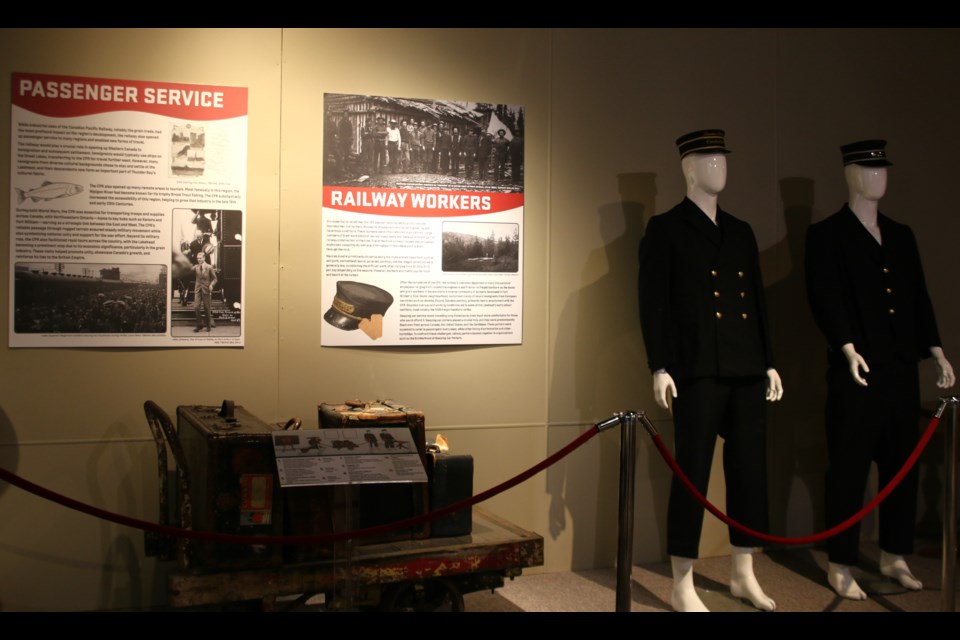THUNDER BAY — An exhibit that opened at the Thunder Bay Museum last month takes up the entire second floor, exploring the creation of the Canadian Pacific Railway.
The exhibit, Where the Line Was Drawn: The Canadian Pacific Railway, Treaties, and the Reshaping of Northwestern Ontario, documents the railway’s start of construction in Thunder Bay in 1875, said executive director Scott Bradley
It “traces the railroad's early years as well as its development and its impact on the community here at the Lakehead, but also its impacts in a broader sense on Indigenous communities, its influence on treaties and many other aspects of our lives.
“The CPR has been critical to the development of Canada — and some of that really started here in Thunder Bay, and Thunder Bay is in the nexus of that — and it's had impacts both positive and negative on a lot of different people. We try to explore that with an unbiased lens through this exhibit, and it's been a really great process to develop it,” Bradley said.
Bradley said the development of the Canadian Pacific Railway prompted a big change in how many Canadians looked at transportation.
“It was also a nation building event. If you were coming from Upper Canada and Lower Canada at the time, you were really coming by boat through the Great Lakes, which was a long and sometimes dangerous journey. The railroad really changed that for a lot of people.
“It changed how we looked at transportation, transshipment of goods, the movement of people throughout the country, but it also meant that we were going to change from a place of distant provinces and the corporate operation of a lot of land into the nation of Canada that wasn't really done up until that point.
“It also meant eroding the sovereignty of First Nations and Indigenous peoples, to accomplish some of that. So there's, like I said, a lot to it.
"The Canadian Pacific Railway was really important to the development of Thunder Bay with the grain elevators, with the movement of coal, potash, and lumber, and a lot of other goods that were just really important to the development of the community.”
Bradley said the staff at the museum did a fantastic job bringing the exhibit to life.
“I want to put a shout out to Jessica Stacey, who led this exhibit, led the design of some of the artwork that got incorporated here, the development of maps, as well as our partnerships with the Friends of Grain Elevators, the Schreiber Railway Museum, and many others who helped pull this all together.”
The exhibit is open now during normal visiting hours, through the rest of the summer until Labour Day. The museum is open seven days a week from 11 a.m. to 5 p.m., and in the fall and through the winter, Tuesday through Sunday from 10 a.m. to 5 p.m.
“When folks come, they'll be able to experience not only the exhibit panels and historic photographs interpreted, but also, we have a large collection of artifacts that are also on exhibit, throughout the galleries, including stuff on loan to us from the Friends of Grain Elevators as well as the Schreiber Museum and some local collectors have also loaned their items to this exhibit.
“There's also a couple of video elements, and there's a train table for kids to play with a wooden railway because of course kids also want to explore this topic and they get to do so in a little bit of a tactile way,” Bradley said.
The exhibit will remain on display until early 2026. Access is included with entrance to the museum.
- With files from Nicky Shaw



